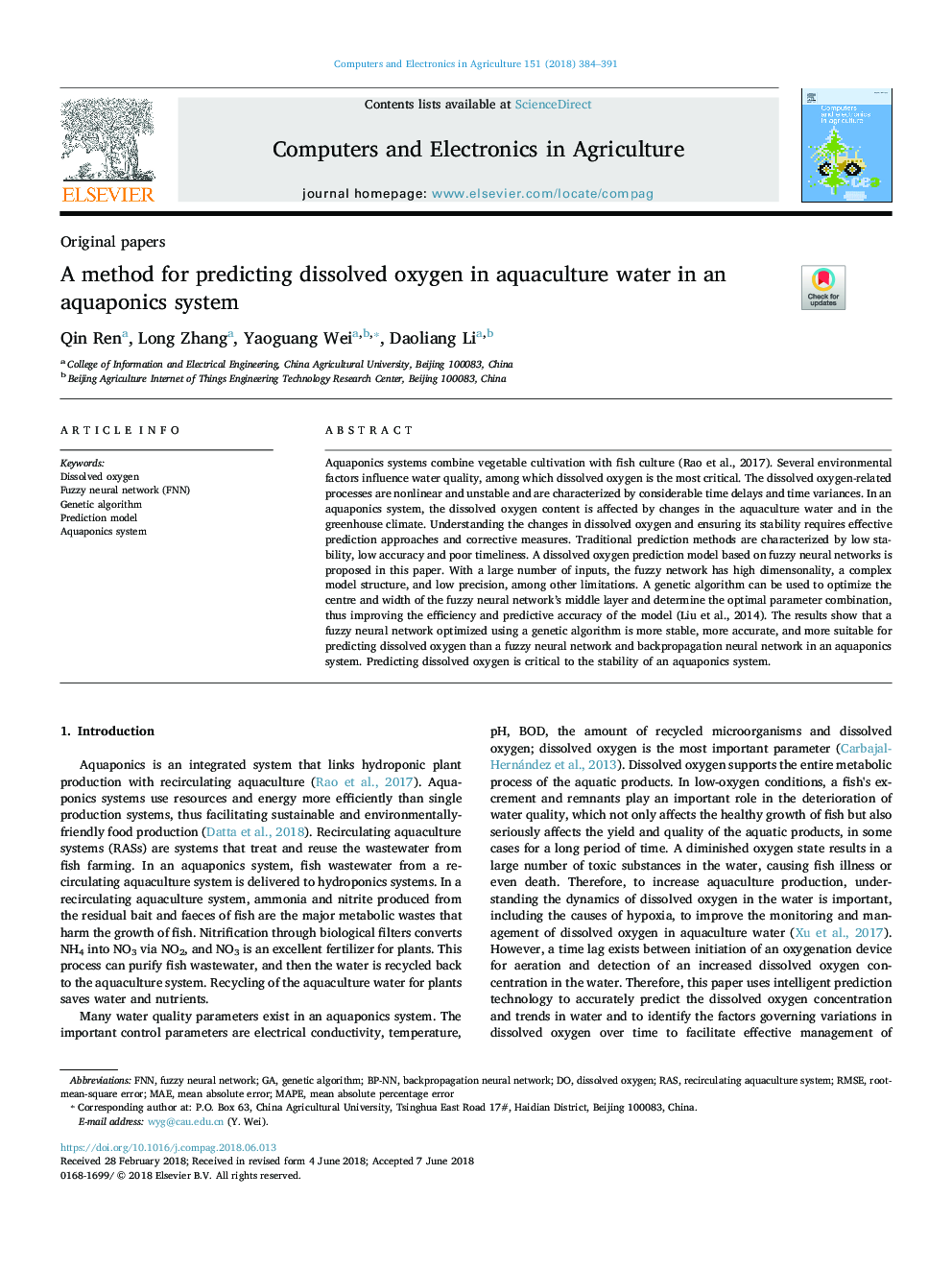| کد مقاله | کد نشریه | سال انتشار | مقاله انگلیسی | نسخه تمام متن |
|---|---|---|---|---|
| 6539439 | 1421097 | 2018 | 8 صفحه PDF | دانلود رایگان |
عنوان انگلیسی مقاله ISI
A method for predicting dissolved oxygen in aquaculture water in an aquaponics system
ترجمه فارسی عنوان
یک روش برای پیش بینی اکسیژن محلول در آب آبزی پرورش در یک سیستم آب آکواریک
دانلود مقاله + سفارش ترجمه
دانلود مقاله ISI انگلیسی
رایگان برای ایرانیان
موضوعات مرتبط
مهندسی و علوم پایه
مهندسی کامپیوتر
نرم افزارهای علوم کامپیوتر
چکیده انگلیسی
Aquaponics systems combine vegetable cultivation with fish culture (Rao et al., 2017). Several environmental factors influence water quality, among which dissolved oxygen is the most critical. The dissolved oxygen-related processes are nonlinear and unstable and are characterized by considerable time delays and time variances. In an aquaponics system, the dissolved oxygen content is affected by changes in the aquaculture water and in the greenhouse climate. Understanding the changes in dissolved oxygen and ensuring its stability requires effective prediction approaches and corrective measures. Traditional prediction methods are characterized by low stability, low accuracy and poor timeliness. A dissolved oxygen prediction model based on fuzzy neural networks is proposed in this paper. With a large number of inputs, the fuzzy network has high dimensonality, a complex model structure, and low precision, among other limitations. A genetic algorithm can be used to optimize the centre and width of the fuzzy neural network's middle layer and determine the optimal parameter combination, thus improving the efficiency and predictive accuracy of the model (Liu et al., 2014). The results show that a fuzzy neural network optimized using a genetic algorithm is more stable, more accurate, and more suitable for predicting dissolved oxygen than a fuzzy neural network and backpropagation neural network in an aquaponics system. Predicting dissolved oxygen is critical to the stability of an aquaponics system.
ناشر
Database: Elsevier - ScienceDirect (ساینس دایرکت)
Journal: Computers and Electronics in Agriculture - Volume 151, August 2018, Pages 384-391
Journal: Computers and Electronics in Agriculture - Volume 151, August 2018, Pages 384-391
نویسندگان
Qin Ren, Long Zhang, Yaoguang Wei, Daoliang Li,
